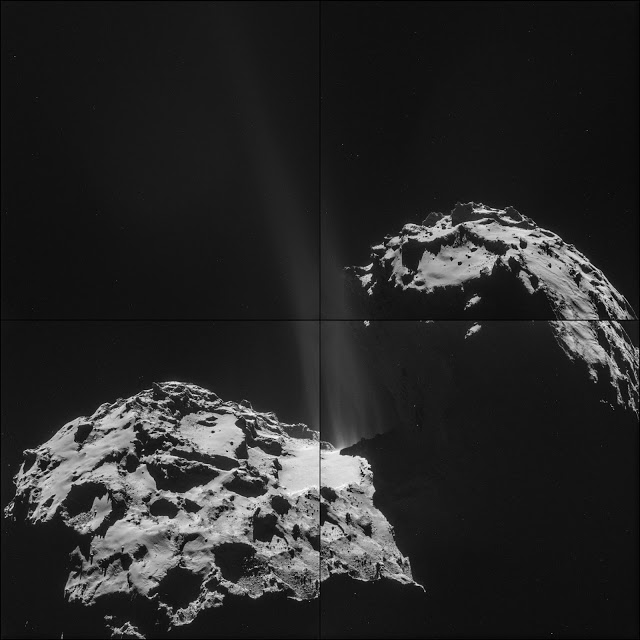| Online: | |
| Visits: | |
| Stories: |

| Story Views | |
| Now: | |
| Last Hour: | |
| Last 24 Hours: | |
| Total: | |
How Comets Were Assembled
In a video sequence based on a computer simulation two icy spheres with a diameter of about one kilometer are moving towards each other. They collide at bicycle speed, start to mutually rotate and separate again after the smaller body has left traces of material on the larger one. Collision of two icy spheres with a diameter of about one kilometer. After a first impact the bodies separate and reimpact a day later.
The time sequence shows that the smaller object is slowed down by mutual gravity. After about 14 hours it turns back and impacts again a day after the first collision. The two bodies finally merge to form one body that somehow looks familiar: The bi-lobed frame resembles the shape of comet 67P/Churyumov-Gerasimenko imaged by ESA’s Rosetta mission.
100 simulations performed
The simulation is part of a study published in “Science Express” by Bernese astrophysicist Martin Jutzi and his US colleague Erik Asphaug (Arizona State University). With their three-dimensional computer models the researchers reconstruct what happened in the early solar system. “Comets or their precursors formed in the outer planets region, possibly millions of years before planet formation,” Martin Jutzi explains.
67P/Churyumov-Gerasimenko isn’t the only comet showing a bi-lobed shape and evidence for a layered structure. Crashing on 9P/Tempel 1 in 2005, NASA’s Deep Impact showed similar layers, a feature that is also presumed on two other comets visited by NASA missions. Half of the comet nuclei that spacecraft have observed so far – among them comets 103P/Hartley 2 and 19P/Borelly – have bi-loped shapes. “How and when these features formed is much debated, with distinct implications for solar system formation, dynamics, and geology”, Martin Jutzi says.
Primordial remnants of a quiet phase
In their study, the researchers applied 3D collisional models, constrained by these shape and topographic data, to understand the basic accretion mechanism and its implications for internal structure. As their three-dimensional computer simulations indicate, the major structural features observed on cometary nuclei can be explained by the pairwise low velocity accretion of weak cometesimals. The model is also compatible with the observed low bulk densities of comets as the collisions result in only minor compaction.
“These slow mergers might represent the quiet, early phase of planet formation around 4.5 billion years ago, before large bodies excited the system to disruptive velocities, supporting the idea that cometary nuclei are primordial remnants of early agglomeration of small bodies,” Martin Jutzi says.
Source:




